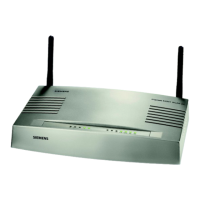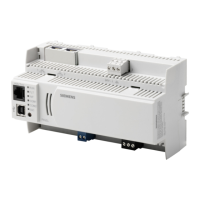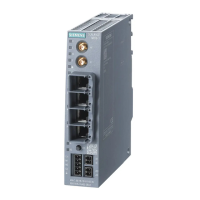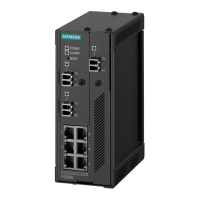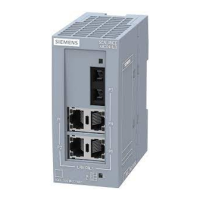175
Glossary
Giga762SX WLAN dsl / eng / A31008-M705-W171-1x-5819 / glossary.fm / 02.07.2008
Schablone 2005_07_27
NAT
Network Address Translation
NAT is a method for converting IP addresses (Private IP addresses) within a network into
one or several Public IP addresses on the Internet. With NAT, several network compo-
nents in a LAN can share the router's public IP address to connect to the Internet. The
network components of the local network are hidden behind the router's IP address reg-
istered on the Internet. Because of this security function, NAT is frequently used as part
of the Firewall of a network. If you want to make services on a PC in the local network
available on the Internet despite NAT, you can configure the Giga762SX WLAN dsl as a
Virtual server.
Network
A network is a group of devices connected in wired or wireless mode so that they can
share resources such as data and peripherals. A general distinction is made between
local networks (LANs) and wide-area networks (WANs).
Network adapter
The network adapter is the hardware device that creates the connection between a net-
work component and a local network. The connection can be wired or wireless. An Eth-
ernet network card is an example of a wired network adapter. The Gigaset PC Card 54
and the Gigaset USB Adapter 54 are examples of wireless network adapters.
A network adapter has a unique address, the MAC address.
Public IP address
The public IP address (also known as the global IP address) is a network component's
address on the Internet. It is assigned by the Internet service provider. Devices that cre-
ate a link from a LAN to the Internet, such as the Giga762SX WLAN dsl, have a public
and a Private IP address.
PBX
Private Branch Exchange
PBX is the English acronym for a public branch exchange, which allows connection and
configuration of extensions and telephone functions.
Port
Data is exchanged between two applications in a network across a port. The port
number addresses an application within a network component. The combination of IP
address/port number uniquely identifies the recipient or sender of a data packet within
a network. Some applications (e.g. Internet services such as HTTP or FTP) work with
fixed port numbers; others are allocated a free port number when-
ever they need one.

